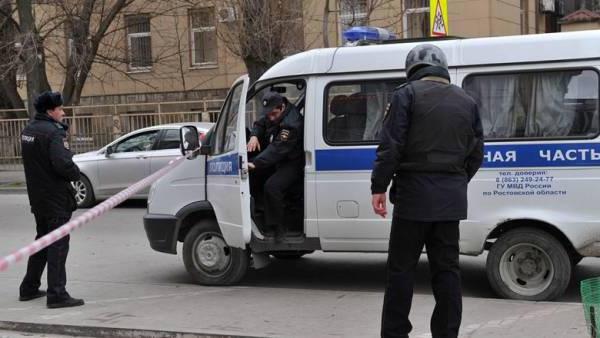Interrogation is a procedural action aimed at obtaining information from a subject who has information that is relevant to the proceedings. It is considered the most common way of collecting evidence. However, this action is the most difficult of all investigative measures. Consider further features of interrogation of the victim, witness, suspect and accused. 
Specificity
Before considering features of the interrogation of witnesses and victims, as well as other participants, it is necessary to determine the range of tasks that are solved during the investigative action. Its main goal is to obtain the full amount of truthful information about the event. The process of forming testimony is carried out at the mental level. Throughout its duration, a person is influenced by a variety of subjective and objective factors. The investigator must have a good understanding of their effect. An employee authorized to conduct a conversation with the subject is required to know the tactical features of the interrogation of victims and witnesses. The techniques developed by practice allow us to weaken the negative impact of various factors on the reliability and completeness of information, to fill in the gaps that have arisen under their influence. They help streamline the reproduction of information stored in memory.
Thing
It is formed by circumstances that the investigator intends to find out. Depending on the status and, therefore, to a certain extent and on the subject, the interrogation of a witness, victim, accused or suspect is distinguished. As separate types, a conversation with an expert and a face-to-face stand out. 
Conditions
An investigative action aimed at obtaining the full amount of reliable information about an event can be effective only if a number of principles are observed. They are:
- Interrogation activity. It consists in the fact that the investigator must firmly hold the initiative during the conversation, skillfully use the techniques, strictly following the legislative requirements.
- Determination of interrogation. It means that the conversation is held to solve specific predetermined tasks. Their formulation is determined by the accurate presentation of the investigator on the subject of interrogation, the desire to achieve the main goal, the ability to choose the appropriate techniques and means.
- Completeness and objectivity. They are expressed in the fact that the investigator cannot, at his own discretion, reduce the amount of information received, change the content of information to bring it into line with his ideas, impose his own opinion on the subject. One of the guarantees of objectivity is a ban on the formulation of leading questions. The completeness of the interrogation is ensured by the requirement of verbatim recording of the information received.
In addition, the investigator needs to know the psychological characteristics of the interrogation of victims and other participants involved in the case. Equally important is the cultural, educational level of the person, his views, profession, social activity. Without taking these factors into account, it is impossible to establish contact with a citizen, which, in turn, is one of the conditions for the effectiveness of an investigative action. 
Classification
In practice, the following can be carried out:
- Initial interrogation. During it, the circumstances of the event are fully clarified. The exception is cases when obtaining the entire amount of information is impractical for tactical reasons.
- Repeated conversation. During it, the investigator again finds out the circumstances (all or some) that the person has already mentioned. The objectives of the second conversation are to detail the information already received, refine it, compare new evidence with previous ones to identify possible contradictions.
- Additional interrogation. In contrast to the repeated conversation, in the course of it new circumstances are clarified, that is, information that was not previously mentioned. The task of additional interrogation is the completion of data. It can be built according to the “question-answer” scheme without free presentation by a person of information known to him.
The investigator draws the initial data for the conversation from operational sources, case materials, archival records. He has the right to request such data at the place of study or work of the person if they can become the subject of interrogation and concern the citizen personally.
Planning
Preparation for interrogation is considered an integral stage. During it, information is collected, the choice of place and time, the method of calling the person, technical support, etc. As mentioned above, the investigator should know features of victim interrogation tactics and other participants in the case. To achieve this goal, the employee uses various techniques during the conversation. However, their effectiveness will depend on how structured the interrogation will be. In this regard, a plan is drawn up during preparation. It is especially necessary in cases where a complex interrogation is carried out, involving the clarification of a large number of circumstances, the use of a significant amount of information, including operational. The plan needs to formulate key issues. In practice, the following types are used:
- Clarifying. They are set to concretize the information.
- Reminiscent of. These questions are aimed at reviving the memory of the subject through the call of any associations.
- Control. They are set to verify the evidence obtained earlier, or to find out information for its conduct.
- Revealing. They are aimed at establishing false information.
Questions must be formulated so that the answers to them are not monosyllabic (such as "yes" or "no"). At the same time, they should be specific, clear and understandable, directly related to the subject of interrogation. Particular importance should be given to their validity and logical sequence. 
Choice of the moment
It is carried out taking into account the materiality of the information that, as the investigator suggests, the subject has, as well as the procedural status, role in the event, relations with other persons who are also subject to challenge. The determination of the moment is also influenced by the selected sequence of conversations with other parties to the case, the interests of secrecy, the nature and degree of the experiences the citizen experienced.
Duration
Interrogation cannot continue for more than four hours without a break. The corresponding requirement is found in article 187 of the CPC. Continuation of the conversation is allowed after the break, lasting at least an hour. During this time, the citizen must eat and rest. The total duration of the interrogation may not exceed 8 hours. If there is evidence, the duration of the conversation is determined in accordance with the medical opinion.
Place and method of calling
The decision on the issue of determining exactly where the interrogation will be conducted is carried out individually. The conversation may be held at the place of investigation or at the location of the person called. Moreover, in any case, the investigator must strive to ensure that the requirements for the interrogation environment are met. As for the methods of calling, the employee chooses the one that is most appropriate for the specific situation and will be able to establish effective contact with the subject, keep secret the fact of invitation from other persons, hold the event at the right time and in the appropriate place.According to the provisions of Article 188 of the Code of Criminal Procedure, a citizen can receive a summons (in person or by means of communication). In some cases, the law allows for forced drive.
Features of the interrogation of a minor victim or witness
The difficulty of obtaining testimony from people under the age of 18 is determined by various factors. First of all, the investigator must take into account psychological features of the interrogation of the witness and the victim that age. Persons under 18 years of age are distinguished by increased suggestibility, little life experience, and instability of behavior. All this often leads to an incorrect assessment by them of the event as a whole or of some individual circumstances of what happened. In this regard, the investigator should pay special attention to the preparation of the conversation. When drawing up a plan, it is necessary to take into account the level of development of a teenager, the degree of influence of adults on him, and the specific character. These factors will be decisive when choosing a conversation place. 
Recommendations
Considering features of interrogation of a minor victim or other party to the case, you should pay attention to the specifics of the choice of place. With young children it is better to talk in a familiar environment. It could be a school, DOW. In some cases, it is advisable to come to their home. Children are often afraid of the official situation, they feel depressed in it. It is necessary to take into account the rapid fatigability, the inability of the child to concentrate on one subject for a long time. In this regard, the interrogation should not be made too long or breaks should be arranged. As for people 15-17 years old, on the contrary, they will be stimulated by the official situation to give truthful testimonies.
Investigator behavior
Considering features of interrogation of a minor victim or witness, an authorized employee of the Airborne Department should behave calmly and friendly. However, he needs to be persistent and firm, self-confident. Such behavior ensures the establishment of the necessary contact with a teenager or child, has confidence, inspires respect for the investigator. An employee’s nervousness, breakdowns can more often than during interrogations of adults lead to bitterness and fear. A teenager or a child will begin to get confused in his testimony, give false information. Sometimes he can even slander himself.
False testimony
Considering features of the interrogation of witnesses and victims under the age of 18, the investigator should facilitate the transition from false information to truthful information. This task is realized by clarifying the causes and explaining the possibility, the need to change your words in the interests of the investigation and to facilitate your situation. It is worth saying that false testimonies of children under 14 years old can be caused not only by a conscious reluctance to tell the truth. The reason is often self-hypnosis, an increased influence of adults. Some information may just be invented by a child. As the main means of incriminating in a lie, special methods of emotional influence are used. In such situations, logical persuasion techniques are often ineffective. So, repeated interrogation is often used. If during it the child accurately repeats all the words spoken by him earlier, while using expressions that are not characteristic of children of his age, the investigator may assume that such evidence is a consequence of the influence of adults. If significant differences are found in the information obtained during the first and repeated interrogations, the employee has the right to conclude that the teenager provided information that is not true. As a rule, fictitious circumstances are poorly held in memory. At the same time, the investigator must take into account the awesome influence of his questions. In this regard, he should formulate them as accurately and correctly as possible. 
Features of the interrogation of the victim and witness: registration procedure
Before the start of the investigative action, the officer of the VD body checks the citizen’s personal documents. After that, his duties, rights and responsibilities are explained to the latter. The course of the conversation, as well as all features of interrogation of the victim recorded in the protocol. The subject's testimony is recorded in the first person. Whenever possible, they are spelled out word for word. The protocol must contain all the questions asked to the citizen and the answers received from him. The document records the facts of the presentation of evidence to the person, including material, papers, the announcement of their contents, playback of recordings (audio / video), evidence taken from him. If the conversation was conducted using technical means, the protocol shall indicate information about them. After the interrogation, the document is presented to the person for review or is read aloud. A citizen has the right to demand additions and amendments to his testimony. After re-reading or hearing, the subject confirms the veracity of the information with his signature. If the document is composed on several pages, it is placed on all pages. In addition, the protocol must be signed by other interrogation participants.
Conversation with the victim
By its status, the victim is considered a person interested in the outcome of the proceedings. His special situation is largely determined by the peculiar experiences associated with the event. In this regard, specific features of the interrogation of the victim. In forensics Much attention is paid to the personal qualities of the subjects involved in the case. In particular, fear, pain, a desire to stop the assault, tension, suffering that occurred at the time of the crime are taken into account. Particularly difficult are conversations with people who are victims of rape. Features of the interrogation of the victim in criminal proceedings consist in the fact that a person may experience memory lapses. They are determined precisely by the strongest experiences that the subject had during the assault. Considering features of interrogation of the victim in criminal In fact, the following should be noted. In some cases, information provided by victims of crimes may cause irreparable losses. Such situations occur with the onset of temporary amnesia. She, in turn, can be caused by both internal experiences and external influences. For example, if a citizen suffered severe bodily harm, he may well lose his memory. Sometimes in the testimony there may be some exaggeration, a generalization of the initial information. Often, the victim of the crime, not wanting this, stipulates the innocent. These circumstances constitute important features of the interrogation of the victim in judicial proceedings. 
Methods
Consider some features of victim interrogation tactics. When talking with the victim, the investigator must take into account the degree of experience and factors that determine his condition at a particular point in time. In many cases, working with the victim immediately after the crime may not only not be effective, but also interfere with obtaining reliable and complete information about the event. Given this, it is advisable not to rush into conversations. Meanwhile, the situation does not always allow delaying the interrogation. In such cases, it is advisable to provide a place where a second conversation will be held. It should be a calm environment. In addition, after a certain time, experiences will lose their sharpness, memory can acquire the ability to reproduce, temporarily lost earlier. Features of the interrogation of the victim closely related to the problems of activation of the brain.To solve them, the investigator needs to explain to the citizen the importance of obtaining the most complete information about the act and the persons involved in it. The employee must ensure that the purpose of the conversation - the collection of reliable information - is temporarily able to supplant the experiences that interfere with the conversation.
Important points
Considering features of interrogation of the victim, it should be noted that in some cases the subject may be silent about some circumstances, give false data, refuse his testimony. All this can take place due to the specific relationship between the victim and the offender, fear of retribution, cowardice, etc. In addition, we should not forget about the possible mistrust of the person to law enforcement agencies. Often, victims of assaults express doubts that law enforcement agencies will be able to find the culprit and punish them by law. It is extremely important to find out the motives by which the subject gives incorrect information or is silent about something. Only taking into account all the features of the interrogation of the victim, the investigator will be able to obtain reliable and complete information about the event.
Conclusion
The work of the investigator is mainly intense mental activity. The employee needs to know about many factors, to understand their impact on people in a given situation. In practice, proven methods and interrogation techniques are used to quickly obtain the necessary evidence in the case.